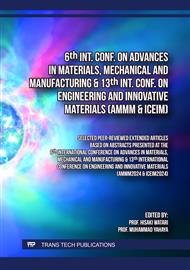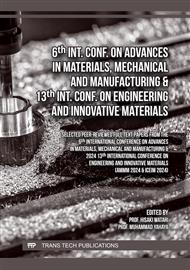p.3
p.11
p.21
p.29
p.37
p.43
p.49
p.57
Effect of Rigid Body Motion in Phase Field Simulation of Sintering during Preheating at the Powder Bed Fusion with Electron Beam Conditions
Abstract:
The powder bed fusion with electron beam (PBF-EB) process is characterised by a preheating step that keeps the building temperature high and produces partial sintering of the metallic powder particles. The influence of the preheating parameters can be studied through numerical simulations, such as those conducted with the phase field (PF) method. PF can describe the neck formation among the particles under the sintering mechanisms. In this regard, PF simulations usually account for the diffusion mechanisms only, neglecting the rigid body motion (RBM), particularly during PBF-EB. The current work analyses the effect of RBM on neck formation and growth among particles subjected to the typical working conditions of a PBF-EB. Owing to the lack of literature, the parameters that describe the rigid translation of the particles undergoing the sintering are identified using a structured design of numerical experiment. Including the RBM during sintering produces a larger neck among the particles and faster densification. This result has been found in agreement with the current literature. However, the decision to include or not the RBM should be adequately waited, considering that in the current study including RBM increased the simulation time. The results revealed that each parameter plays a different role in the rigid translation of the particles, causing a different neck dimension.
Info:
Periodical:
Pages:
21-26
Citation:
Online since:
August 2025
Authors:
Keywords:
Price:
Сopyright:
© 2025 Trans Tech Publications Ltd. All Rights Reserved
Share:
Citation:



